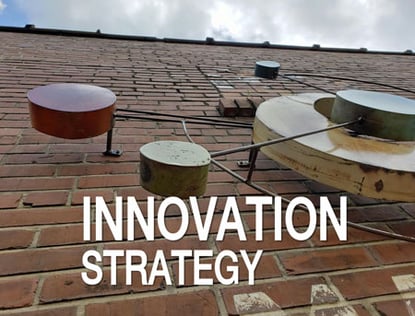 Today's post for World Creativity and Innovation Week comes through a Twitter connection with Gwen Ishmael, Senior VP, Insights and Innovation at Decision Analyst in Dallas. Gwen has worked across a variety of industries in branding and marketing, with leadership roles in new product and service development. She spoke at the marcus evans Open Innovation conference last week, and shares her perspectives on themes from the conference:
Today's post for World Creativity and Innovation Week comes through a Twitter connection with Gwen Ishmael, Senior VP, Insights and Innovation at Decision Analyst in Dallas. Gwen has worked across a variety of industries in branding and marketing, with leadership roles in new product and service development. She spoke at the marcus evans Open Innovation conference last week, and shares her perspectives on themes from the conference:
This month's 3rd Annual Open Innovation conference in Las Vegas saw B2B and B2C firms coming together to share open innovation (OI) best practices and tools. Unlike other events I’ve attended, these companies embraced the concept of openness and spoke candidly about how they had achieved their successes and where they’re trying to improve.
Headway is being made in addressing OI resistance. For some, the quest for external inspiration and contribution is actively promoted by executive management. Chris Thoen, Director of Innovation and Knowledge Management at P&G, says CEO A.G. Lafley’s long-standing direction for “50% of P&G’s initiatives to have at least one significant external partner” has helped change the “not invented here” mindset to one of “proudly found elsewhere.” Other efforts, such as the Alcan Packaging customer-centric Idea Factory, have been championed by those further down in the organization.
The quest for meaningful and relevant measures of OI return on investment continues. Director of Capital Investments and Innovation Strategy at Embarq, Jeff Stafford, shared an interesting approach based on Monte Carlo simulation in which potential sell scenarios and associated cash flows were used to determine the viability of an idea. And Brian Johnston, Director of External Alliances for Kodak, presented a six-question evaluative framework Kodak and its partners used to jointly define success.
Yet for me one theme rose above the others, which Jeff Bellairs, G-Win Director for General Mills, captured in a wonderfully simple phrase: “Open Innovation is not about being external. It’s about being connected.” Jason Husk, Group Manager Technology Brokerage for Clorox, supported this stance and presented a symbiotic relationship between technology, consumers, and business results as a model for connection. And Chris Thoen announced P&G’s launch of Connect + Develop 2.0 OI model through which the company will focus on collaborating with partners for mutual value creation.
It appears companies are successfully working through initial OI issues related to internal sell-in of OI as a good idea and decisions on the right partners to consider. Now they’re progressing to the next stage and addressing the kinds of relationships to have with partners and the appropriate ways to foster them.
With connection as the tactic for implementing an OI strategy, true collaboration between a company and its partners – whether they’re universities, other firms, customers, or consumers – becomes more possible.


